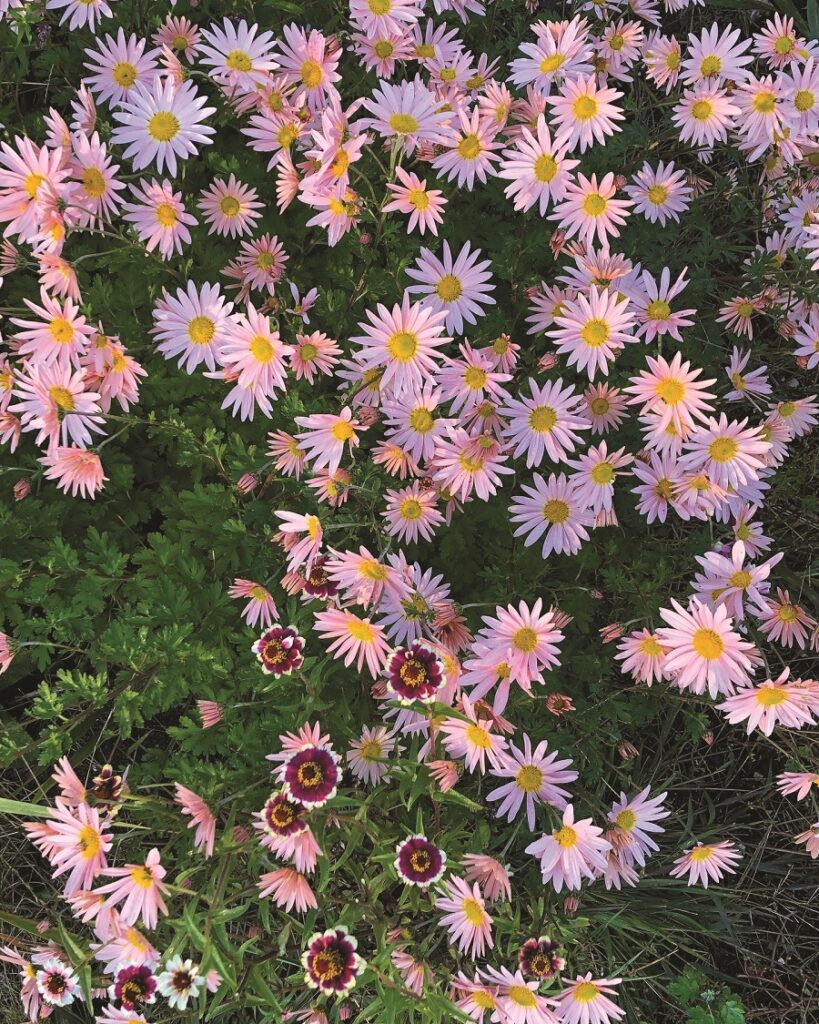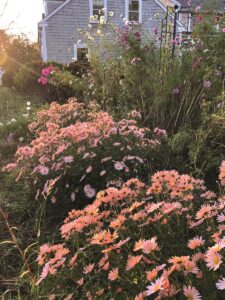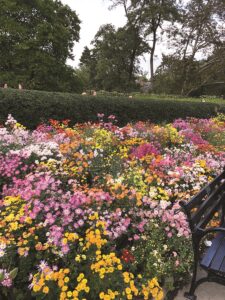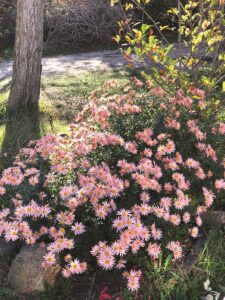Depending on whom you ask, chrysanthemums are either beloved symbols of autumn or one of those plants that are so commonplace that they’ve become boring. I’m reminded of Maggie Smith’s withering line when she sees them displayed in her headmistress’s office in the 1969 movie The Prime of Miss Jean Brodie: “Ah, chrysanthemums. Such serviceable flowers.” Ouch.
These daisy relatives are indeed sturdy, dependable, familiar, and all those other adjectives that don’t exactly inspire passion in a mum or a mate. But there’s a group of lesser-known, lesser-grown varieties that I’ve had a crush on for decades, and now I’ve finally had the chance to try them in my Truro garden: the hardy, garden, or Korean group of mums.

Everyone is familiar with the cushion mums that show up at big-box stores in the fall. Shoppers take those uniform domes of bright hard-candy colors home, pop them in a container (or not, just keeping them in their terracotta-colored plastic pots), and then throw them away once the flowers have faded and Christmas décor takes over.
Somehow, through no fault of their own, they’ve ended up being the poster child for disposable horticulture — a lot of effort and resources to create a plant that’s enjoyed only for a few weeks of the year. To get the tight pincushions desired by growers, these greenhouse plants are pruned for uniform bloom and doctored with chemicals like ethephon to retard their growth so that they flower at just the right time for pumpkin season.

They serve a purpose for late-season spruce-ups, but put them in as fall additions in a flower bed and they stand out as stiffly as someone who’s arrived at a beach bonfire in a tuxedo.
That’s why I’m obsessed with the type of mums that are perennial and look natural growing in your garden. As you can tell by the multiple names I’ve used for them here, one of the problems with these mums is their confusing classification and branding. “Hardy” indicates that they’re better at surviving winter than cushion mums (up to zone 4 or 5 in favorable conditions). “Garden” because they mix well in a border. And “Korean” because they were hybridized from Chrysanthemum coreanum, a.k.a. C. x rubellum, which was chosen for its hardiness and graceful growth habit by Connecticut nurseryman Alex Cumming Jr. in the 1930s.
Some of the varieties he and others hybridized can still be found at nurseries: Sheffield Pink (sometimes sold as Sheffield since it’s really a soft apricot), Clara Curtis (more of a Barbie pink), Venus (soft pink and white), Mary Stoker (gold), and others that I see for sale only in the U.K.

I first saw Korean mums at the Conservatory Garden in New York’s Central Park, where dozens of unnamed varieties form a rainbow of warm colors starting in late October. Their open faces are so popular with pollinators that you can hear the insects buzzing from several yards away. If cushion mums had been used, as they often are in municipal plantings, the effect would be uptight and rigid, but these plants are allowed to grow lanky and tall so that they loll romantically on each other. There’s something about the languorous way they are grown in that formal setting that’s captivated me, and I try to pay an annual visit.

Two years ago, we planted three small Sheffield Pink plants. Each year they’ve grown robustly, so much so that they are three-by-four-foot giants — and, because we’ve divided them in the spring, we now have eight of them.
They thrive in our free-draining sandy loam with little care. Perhaps because the soil is a bit lean and dry, I don’t need to pinch back my mums as most sources recommend (plus they’ve flourished even with seasonal droughts and a lack of fertilizer). If you are growing mums in richer, moist soil, you may need to give each plant a trim once before the Fourth of July so they don’t flop, but don’t do it any later or you’ll jeopardize their fall blooms. Be aware that consistently wet feet over the winter will kill a chrysanthemum faster than any cold spell could.
Like the barometers of fall that they are, mums start to bloom when longer periods of darkness act as a trigger. They may arrive late to the garden party — I’ve observed my Korean hybrids blooming weeks later than the store-bought types — but they more than make up for it with their visual impact. I look at my photos of the garden last fall and there they are, looking fresh and spectacular compared to the wreckage of spent annuals and over-the-hill perennials around them.

What intrigues me most, other than the beauty and honey-like scent of these mums, is their elusiveness in the market. The collector in me wants to grow as many of them as possible in a Conservatory Garden-type jumble, but because of their confusing classifications, they aren’t always easy to find, much less identify. (Though I have found some at Bayberry Gardens in Truro and online at Bluestone Perennials.)
My plan is to experiment with a couple of potentially hardy hybrids each season to see which ones might be happy enough on the Outer Cape to return the following year. Because dividing them is so easy, I also have a scheme to be a bit of a Johnny Appleseed, along with some of my neighbors who are already growing the Sheffield Pink. If you start to see a lot of apricot-colored mums popping up in various gardens around the Outer Cape, it might just be our handiwork.
You can follow the writer’s garden experiments on Instagram @steporr.
